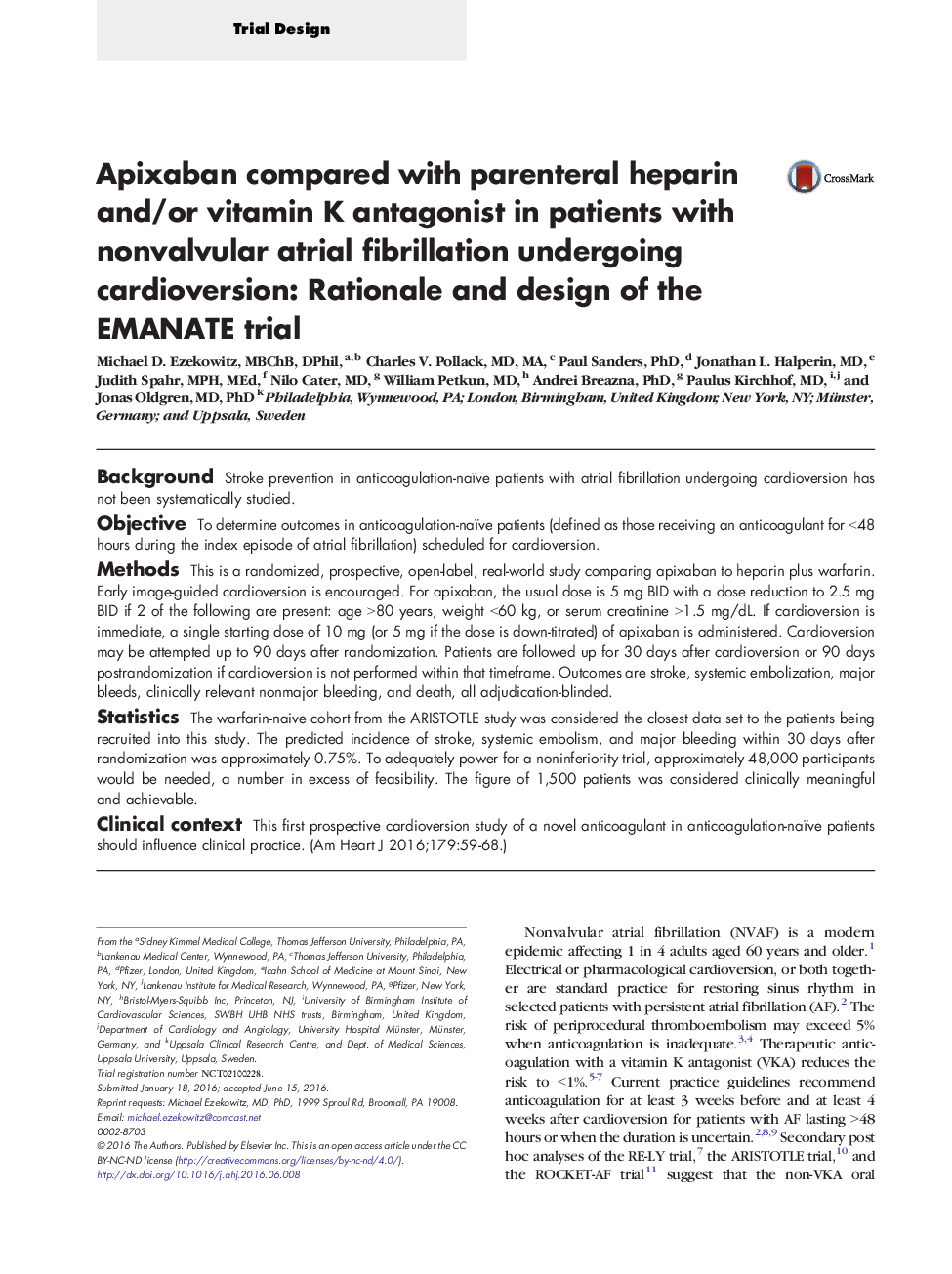| Article ID | Journal | Published Year | Pages | File Type |
|---|---|---|---|---|
| 5926675 | American Heart Journal | 2016 | 10 Pages |
BackgroundStroke prevention in anticoagulation-naïve patients with atrial fibrillation undergoing cardioversion has not been systematically studied.ObjectiveTo determine outcomes in anticoagulation-naïve patients (defined as those receiving an anticoagulant for <48 hours during the index episode of atrial fibrillation) scheduled for cardioversion.MethodsThis is a randomized, prospective, open-label, real-world study comparing apixaban to heparin plus warfarin. Early image-guided cardioversion is encouraged. For apixaban, the usual dose is 5 mg BID with a dose reduction to 2.5 mg BID if 2 of the following are present: age >80 years, weight <60 kg, or serum creatinine >1.5 mg/dL. If cardioversion is immediate, a single starting dose of 10 mg (or 5 mg if the dose is down-titrated) of apixaban is administered. Cardioversion may be attempted up to 90 days after randomization. Patients are followed up for 30 days after cardioversion or 90 days postrandomization if cardioversion is not performed within that timeframe. Outcomes are stroke, systemic embolization, major bleeds, clinically relevant nonmajor bleeding, and death, all adjudication-blinded.StatisticsThe warfarin-naive cohort from the ARISTOTLE study was considered the closest data set to the patients being recruited into this study. The predicted incidence of stroke, systemic embolism, and major bleeding within 30 days after randomization was approximately 0.75%. To adequately power for a noninferiority trial, approximately 48,000 participants would be needed, a number in excess of feasibility. The figure of 1,500 patients was considered clinically meaningful and achievable.Clinical contextThis first prospective cardioversion study of a novel anticoagulant in anticoagulation-naïve patients should influence clinical practice.
